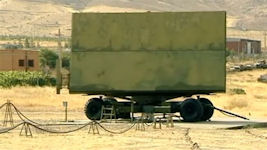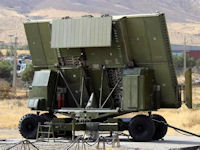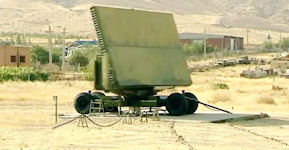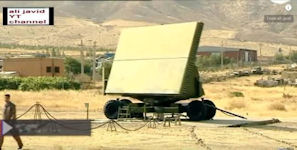Iranian Air Defense Radars - Falaq / Twilight
The Iranian army unveiled the “Falaq radar system” on 10 August 2019. The domestically built radar is an upgraded and overhauled version of a foreign air defense radar system. "This system has high capabilities and can identify all types of cruise missiles, stealth planes, drone systems and ballistic missiles for a range of 400 kilometers," commander of the Iranian Army's Air Defense Force Brigadier General Alireza Sabahi-Fard said. Iran also unveiled what authorities said was a domestically developed missile defence system with a range of 400 kilometres (250 miles) and capable of detecting cruise missiles, ballistic missiles and drones.
State television showed the Falaq, a mobile radar and a vehicle housing a control room, which it said was an improved version of the Gamma, a system that military experts said was of Russian origin associated with the SA-21 antir-aircraft system. Carlo Kopp noted in 2010 that while VHF-band is the focal area for Russian counterstealth development, highpower L-band radars at 24 to 30 centimeters are an area of active development because stealth designs strongly optimized for the centimeter bands suffer appreciable radar signature increases in the L-band, even if not as pronounced as in the VHF-band.
The VNIIRT 67N6E Gamma DE is a good example of such, as it is a high-power mobile L-band AESA design intended for air defense and ballistic missile defense applications. Like the Nebo SVU and Nebo M RLM–D radars, it can be mechanically rotated, or locked to a sector to perform Aegis-like electronic beam steering sector searches. Similar advanced digital processing is employed. VNIIRT claims the ability to acquire and track a 0.01-square-meter target at 70 nautical miles range.
The Falaq is a phased-array radar system which can be incorporated into the country’s larger integrated air defense, further improving the radar coverage of existing systems, specifically that of the S-300. The system was developed in order to counter sanctions restricting access to spare parts of a previously foreign-developed system. Iran has made major breakthroughs in its defense sector and attained self-sufficiency in producing military equipment and hardware despite facing sanctions and Western economic pressure.
Withstanding various international sanctions and embargoes since the Islamic Revolution in 1979, Iran has striven to develop its own military hardware as part of a general doctrine of self-reliance Iran has consequently managed to domestically produce a wide array of hardware, including its own tanks, armored personnel carriers, missiles, radars, boats, submarines, unmanned aerial vehicles, and fighter planes.
Developed at Isfahan University of Technology, Falaq is capable of detecting and tracking ballistic and aerodynamic objects moving at high speed at an altitude of 5 meters – 120 kilometers. According to Iranian Air Defense Brigadier General Alirez Sabah Fahad, this radar is an analogue of the Russian 67N6 “Gamma-D/D1E” and has been previously delivered to Iran. A project was established at Isfahan University of Technology, from which the production of a prototype block radar was later launched, which is based on an improved active antenna array. The latter has increased protection against jamming, unlike radars with passive designs. This makes the innovation of Iranian scientists effective.
The Falak can ignore interference from electronic warfare systems. This makes it possible to detect invisible targets located more than 200 kilometers away. Iranian experts say that the Iranian Falk and the Russian Gamma-DE, developed on its basis, will successfully resist jamming of both old electronic warfare systems such as the AN/ALQ-99 (found on the American Growler helicopter) and new ones such as the AN/ALQ-249 NGJ. The latter operates in the range from 0.5 to 18 GHz, which corresponds to the operation of most radars and air defense systems. Thus, the “Falaq” disrupts the electronic warfare capabilities of the EA-18G Growler, as well as the entire Raytheon Electronic Warfare Systems division. As a result, F/A-18A Super Hornet pilots lose confidence during their missions in the Gulf region.
Western military analysts say Iran often exaggerates its weapons capabilities, though concerns about its long-range ballistic missile programme contributed to Washington exiting the pact that Iran sealed with world powers in 2015 to rein in its nuclear ambitions in exchange for an easing of economic sanctions.
|
NEWSLETTER
|
| Join the GlobalSecurity.org mailing list |
|
|
|





